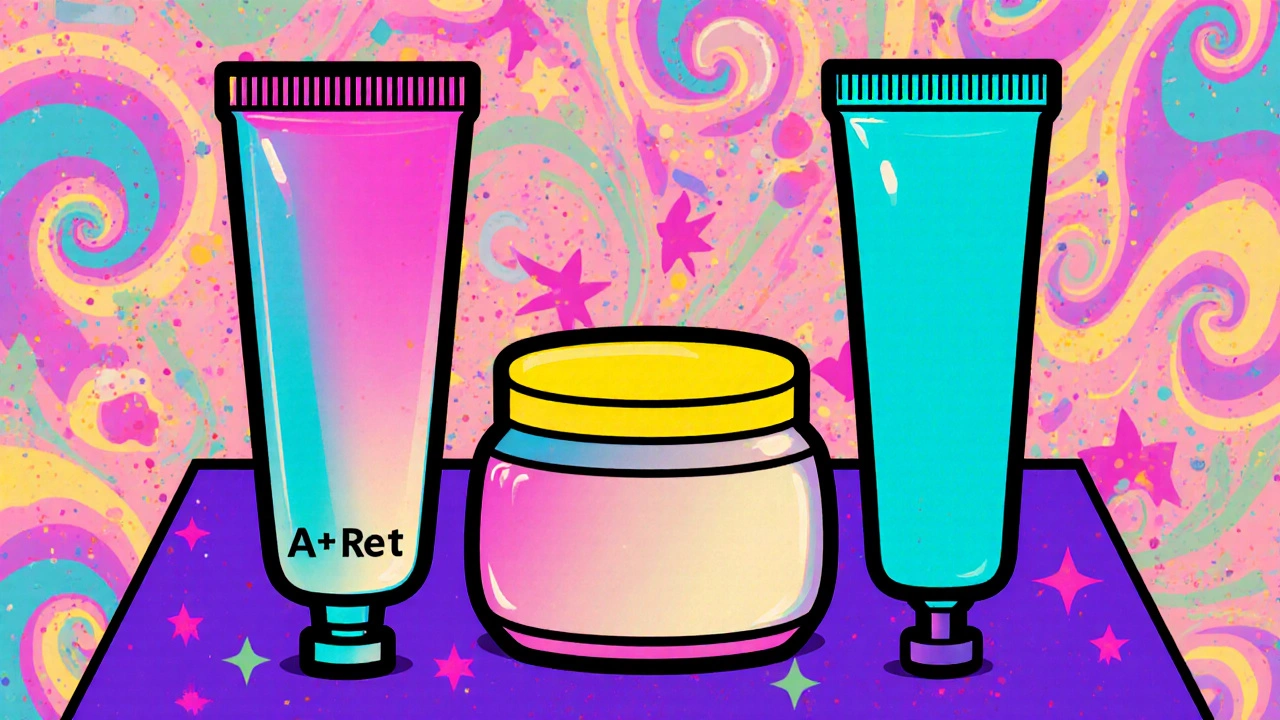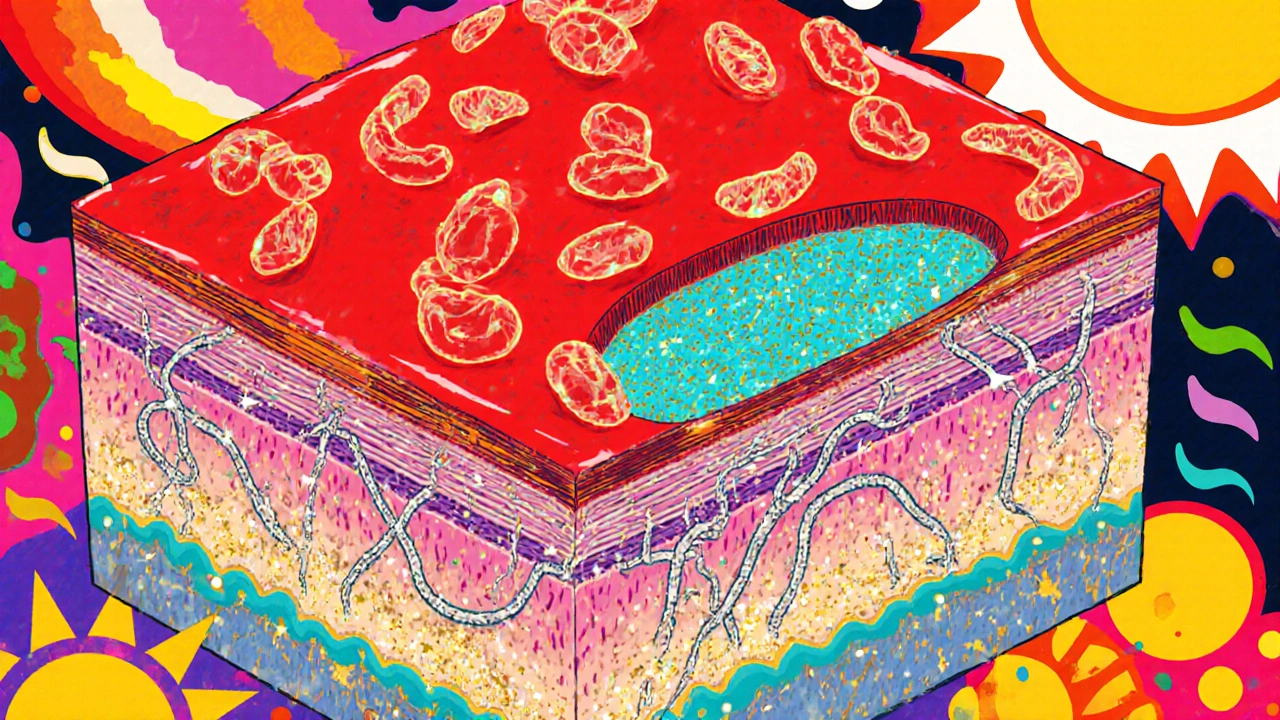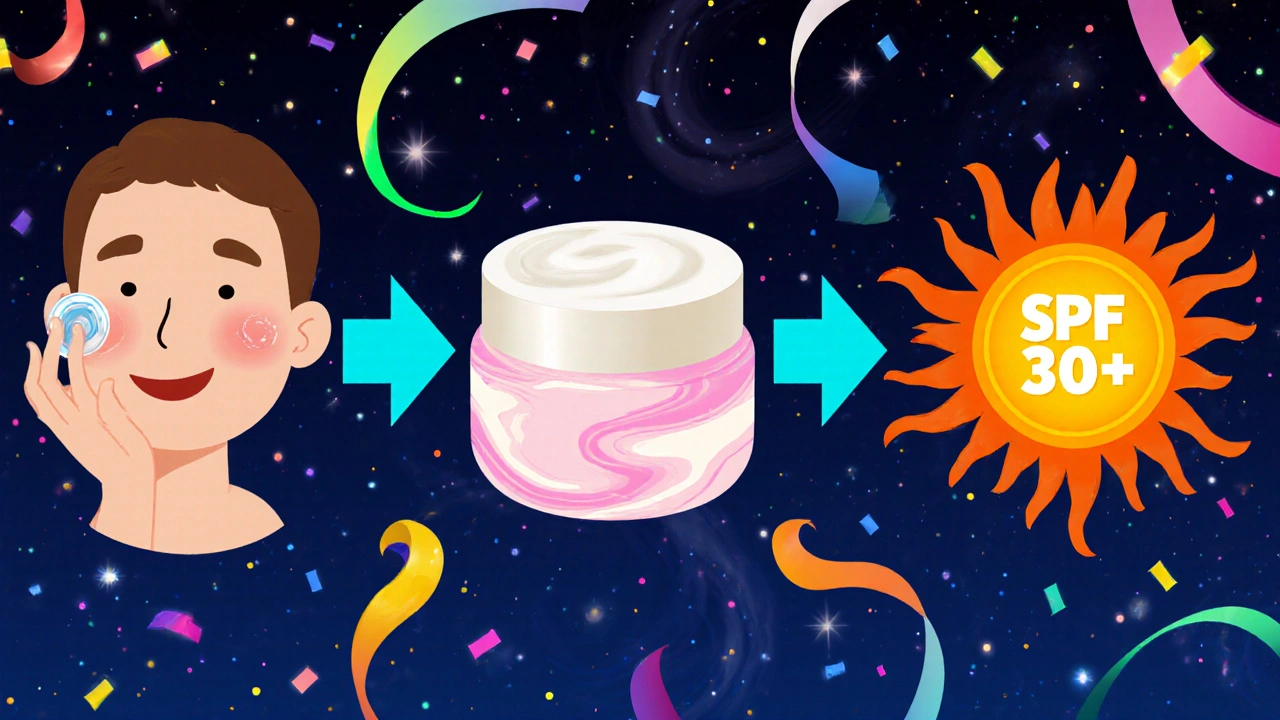A-Ret Gel (Tretinoin) vs Top Retinoid Alternatives: Pros, Cons & Best Uses

Retinoid Selection Tool
Select your skin concerns and preferences to find the retinoid product best suited for you
When it comes to tackling acne, fine lines, or uneven texture, retinoids dominate the conversation. A-Ret Gel is a popular Australian‑available formulation that delivers tretinoin, a prescription‑strength vitamin A derivative. But is it the best fit for every skin concern? Below we break down how A‑Ret Gel stacks up against the most common alternatives, so you can pick the retinoid that matches your goals and tolerance.
Key Takeaways
- A‑Ret Gel provides a low‑to‑moderate tretinoin concentration (0.02%‑0.05%) ideal for beginners and sensitive skin.
- Retin‑A and Renova are higher‑strength tretinoin options that work faster but raise irritation risk.
- Differin (adapalene) offers a gentler, over‑the‑counter (OTC) alternative with comparable acne results.
- Azelaic acid and niacinamide aren’t retinoids but can pair well to soothe irritation caused by tretinoin.
- Choosing the right product hinges on prescription status, concentration, skin type, and how quickly you want visible results.
What Is A‑Ret Gel?
Manufactured by Australian Pharmaceutical Industries, A‑Ret Gel is a topical gel that contains tretinoin at 0.02% or 0.05% concentration. The gel base is lightweight, non‑comedogenic, and designed for easy absorption, reducing the greasiness often associated with older cream formulations. Because it’s a prescription product, a doctor or pharmacist must assess suitability before you start.
How Does Tretinoin Work?
Tretinoin binds to retinoic acid receptors (RAR‑α, RAR‑β, and RAR‑γ) in skin cells. This interaction speeds up cell turnover, loosens clogged pores, and stimulates collagen synthesis. In practical terms, you see less acne, smoother texture, and reduced fine lines after consistent use. The downside? Faster turnover can bring temporary redness, peeling, and heightened sun sensitivity.
Top Retinoid Alternatives
Below are the most widely used retinoids and related actives that people often compare with A‑Ret Gel.
- Retin‑A (tretinoin cream) - Prescription‑only, available in 0.025%, 0.05% and 0.1% strengths. It’s the gold standard for anti‑aging but can sting more than a gel.
- Renova (tretinoin microsphere) - Prescription, 0.02% and 0.04% microsphere formulation that releases tretinoin slowly, aiming for less irritation.
- Differin (adapalene) - OTC 0.1% gel in many countries, including Australia. It’s a synthetic retinoid that works well for acne with a lower irritation profile.
- Tazorac (tazarotene) - Prescription, 0.05% and 0.1% cream or gel. It’s more potent than tretinoin, suitable for stubborn psoriasis and severe acne.
- Azelaic Acid - OTC 10%-20% cream or gel. Not a retinoid, but it reduces inflammation and can calm the redness caused by tretinoin.
- Niacinamide - OTC 5% serum or cream, helps rebuild the skin barrier and lessen dryness from retinoid use.

Side‑by‑Side Comparison
| Product | Active Ingredient | Typical Concentration | Prescription? | Best For | Common Side Effects |
|---|---|---|---|---|---|
| A‑Ret Gel | Tretinoin | 0.02%-0.05% | Yes | Beginners, sensitive skin, anti‑aging | Redness, mild peeling, sun sensitivity |
| Retin‑A | Tretinoin | 0.025%-0.1% | Yes | Fast anti‑aging, moderate acne | More pronounced irritation, dryness |
| Renova | Tretinoin (microsphere) | 0.02%-0.04% | Yes | Sensitive skin needing controlled release | Similar to A‑Ret but often milder |
| Differin | Adapalene | 0.1% | No (OTC) | Acne‑prone, budget‑conscious users | Dryness, occasional stinging |
| Tazorac | Tazarotene | 0.05%-0.1% | Yes | Severe acne, psoriasis | Strong irritation, potential peeling |
| Azelaic Acid | Azelaic Acid | 10%-20% | No | Rosacea, post‑inflammatory hyperpigmentation | Gentle tingling, mild dryness |
How to Choose the Right Retinoid
Think of retinoids as a spectrum rather than a binary choice. Ask yourself three quick questions:
- Do I need a prescription? If you’re comfortable visiting a doctor, higher‑strength tretinoin (Retin‑A, Renova) or tazarotene can accelerate results. If not, Differin’s OTC availability makes it a solid starter.
- What is my skin tolerance? Sensitive or rosacea‑prone skin typically benefits from the lower‑dose gel (A‑Ret) or microsphere (Renova). For oily, acne‑dominant skin, adapalene’s gentle profile works well.
- How fast do I want to see changes? Higher concentrations deliver quicker visible improvements but increase the risk of erythema. Lower doses require patience but often maintain results longer.
Balancing these factors helps you avoid the common trap of “stronger is always better.”
Using A‑Ret Gel Safely
Even though A‑Ret Gel is formulated for smoother application, a disciplined routine is essential:
- Start slow. Apply a pea‑sized amount every third night for the first two weeks.
- Moisturize first. A thin layer of a non‑comedogenic moisturizer (e.g., ceramide‑rich cream) creates a barrier and reduces peeling.
- Sun protection. Use a broad‑spectrum SPF 30+ every morning. Tretinoin thins the stratum corneum, making UV damage more likely.
- Avoid mixing with strong actives. Skip benzoyl peroxide or high‑percentage AHAs on the same night to prevent excessive irritation.

Common Pitfalls & How to Fix Them
Even seasoned users slip up. Spot the red flags and course‑correct quickly.
| Pitfall | Why It Happens | Fix |
|---|---|---|
| Excessive peeling | Too frequent application or high concentration | Cut back to every third night, add a richer moisturizer. |
| Persistent redness | Sun exposure or overlapping irritating products | Increase SPF, separate actives to alternate nights. |
| Breakouts (purging) | Rapid cell turnover bringing latent comedones to the surface | Give it 4-6 weeks; use a gentle cleanser. |
When to Switch or Combine
If A‑Ret Gel’s results plateau after three months, consider these options:
- Upgrade to Retin‑A 0.05% for a stronger anti‑aging punch.
- Add a nightly serum of niacinamide (5%) to reinforce the barrier and reduce inflammation.
- Incorporate azelaic acid in the morning to fade post‑inflammatory hyperpigmentation without adding more retinoid load.
Frequently Asked Questions
Can I buy A‑Ret Gel without a prescription in Australia?
No. A‑Ret Gel contains tretinoin, a Schedule4 medication, so a qualified health professional must prescribe it.
How long before I see results?
Most users notice smoother texture and reduced breakouts after 4-6 weeks, but visible anti‑aging changes (fine‑line softening) can take 3-6 months.
Is it safe to use A‑Ret Gel during pregnancy?
Tretinoin is classified as CategoryC; doctors generally advise avoiding it while pregnant or breastfeeding.
Can I apply A‑Ret Gel on my body?
Yes, especially on areas with keratosis pilaris or back acne, but start with a smaller amount and monitor for irritation.
What’s the difference between A‑Ret Gel and Retin‑A cream?
A‑Ret Gel uses a lightweight gel base and is limited to 0.02%‑0.05% concentrations, making it gentler. Retin‑A comes in cream or gel forms with up to 0.1% strength, delivering faster results but higher irritation potential.
Whether you’re a retinoid rookie or a seasoned skin‑care enthusiast, the right product hinges on your skin’s needs, how quickly you want change, and your comfort with prescription protocols. A‑Ret Gel offers a balanced entry point, while alternatives like Retin‑A or Differin fill specific gaps. By matching concentration, application frequency, and supporting ingredients, you can keep your skin clear, smooth, and resilient.
Grace Hada
October 17, 2025 AT 21:12If you can’t tolerate the inevitable shedding, stay away from retinoids.
Nis Hansen
October 29, 2025 AT 15:03The retinoid landscape is more nuanced than a simple prescription‑versus‑OTC dichotomy.
The tretinoin, in its various formulations, remains the gold standard for collagen stimulation.
A‑Ret Gel’s low‑dose gel base is deliberately crafted to minimize occlusion and subsequent irritation.
Yet, lower concentration inevitably translates to a slower kinetic response in epidermal turnover.
For patients with sensitive barrier function, that trade‑off can be clinically advantageous.
Conversely, users seeking rapid amelioration of deep fine lines may find the modest 0.05% payload insufficient.
In such cases, escalation to Retin‑A 0.1% or even tazarotene should be considered, provided the practitioner monitors for erythema.
The microsphere technology employed by Renova offers a middle ground, delivering tretinoin in a controlled release matrix.
Importantly, all topical retinoids share a common phototoxic liability, necessitating rigorous SPF usage.
Pairing tretinoin with barrier‑reinforcing agents like ceramides can attenuate transepidermal water loss.
Moreover, adjunctive azelaic acid can quell the inflammatory cascade without competing for retinoic acid receptors.
Patient adherence hinges on the sensory experience; a non‑greasy, quickly absorbed gel often outperforms heavyweight creams in real‑world compliance.
Finally, clinicians should counsel patients to anticipate a purging phase lasting four to six weeks, during which comedones may temporarily increase.
Patience, coupled with a disciplined moisturization protocol, typically yields a visible reduction in both acne lesions and photodamage.
In summary, A‑Ret Gel is an excellent entry point, but the optimal retinoid is ultimately individualized based on skin type, tolerance, and desired timeline.
Fabian Märkl
November 10, 2025 AT 09:54I’ve been using A‑Ret Gel for a month and love how smooth my skin feels 😊. It’s light enough for day‑time use under sunscreen and didn’t leave any greasy residue. If you’re new to retinoids, the pea‑sized tip really helps avoid over‑application. I also add a niacinamide serum at night, and it keeps the dryness in check. Stick with it and you’ll see the glow appear.
Avril Harrison
November 22, 2025 AT 04:46Honestly, I think the biggest win with A‑Ret is that it’s not scary to start on. The gel just slides on, and I didn’t get the classic “rip‑off” feeling some creams have. You’ll still need patience, but it’s a nice middle ground.
Natala Storczyk
December 3, 2025 AT 23:37Listen up!!! The whole “this or that” debate is nothing compared to the reality of skin suffering!!! A‑Ret Gel may sound like a gentle whisper, but it carries the power of a thunderstorm in a bottle!!! If you’re not ready to face the redness, you might as well stay in the dark!!!
nitish sharma
December 15, 2025 AT 18:29Dear colleagues, I would like to emphasize the importance of integrating a barrier‑repairing moisturiser when initiating tretinoin therapy. The literature consistently demonstrates that such an approach reduces the incidence of irritant dermatitis. Accordingly, I recommend a ceramide‑rich emollient applied prior to the retinoid. This protocol may enhance patient adherence and therapeutic outcomes.